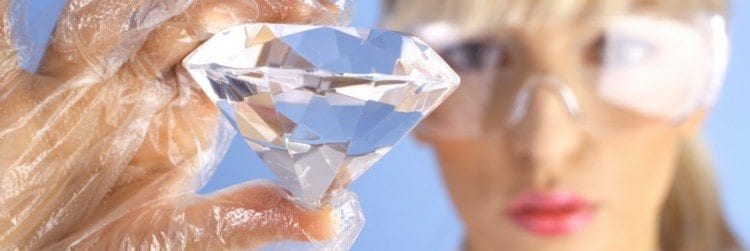
By now, you’re most likely aware of the fact that natural diamonds are created through geological processes over thousands of years. However, did you know that synthetic diamonds are a thing? Unlike their natural counterparts, these are created through an artificial process in laboratories, and it takes several weeks for them to become diamonds.
Synthetic diamonds also have different names depending on the production methods: chemical vapor deposition methods and high-pressure high-temperature. The names of the diamonds are CVD diamond and HPHT diamond.
But what is the science between them and their positive impact on the environment? You will find the answer here.
There are several ways to produce synthetic diamonds. One method to produce them is through ultrasound cavitation. It is mostly used in micro-sized diamond crystals creation. Basically, these tiny crystals can be created by suspending graphite in an organic liquid at room temperature and atmospheric pressure. It uses, of course, ultrasonic cavitation.
The most used method is the high-pressure high-temperature one because the price is lower compared to other methods. Basically, when diamonds are manufactured through this method, three main press designs are used in order to supply the temperature and pressure for synthetic diamonds. They are the cubic press, the belt press, and the split-sphere press. They are very heavy, weighing hundreds of tons, so they create the needed pressure of 5GPa at 1500°C.
The last method is chemical vapor deposition. It is very simple and flexible to set up, which is why researchers from laboratories prefer it. In addition, through this method, it is possible to grow synthetic diamonds over large areas and on different substrates. Moreover, there’s not so much pressure needed when using this method, as compared to the HPHT one.
So, this is how synthetic diamonds are made – this type of diamond is made the ashes, and is not harmful to the environment. They are created in labs, which means that more control is exerted over the labor process – while requiring less energy to make them.
Both diamond mining and laboratory production of diamonds require the use of energy. Energy can have a bad impact on the environment because too much oil and natural gas resources are used, and the environment becomes polluted.
However, while one of the largest producers of natural diamonds uses about 80.3 kilowatt-hours per carat over their mining operations, lab-grown diamonds are another story. They only require about 20-28 kilowatt-hours per carat. Therefore, less energy is used when manufacturing them, so the environment is more protected through this method.
Another fact is that natural diamond mining changes the surrounding environment a lot. If a mine is about 2 miles deep, it’s obvious that all the earth within that depth must be excavated. So, for 1 carat worth of diamonds, as much as 1,700 tons of dirt needs to be moved. In addition to this, moving the dirt influences the area that surrounds the mine. The dirt has to be dropped somewhere, so the land is disturbed as a consequence. Even waterways and similar features are removed in order to mine natural diamonds.
At the same time, synthetic diamonds are grown in labs, meaning the land is not affected by manufacturing them. Manufacturers don’t have to change the environment to be able to access them – carbon is simply placed in a machine, and it grows into diamonds. Therefore, it has no impact on the land, animals, and plants.
Also, they produce fewer carbon emissions compared to natural diamonds. Natural ones require heavy machinery for their production and emit more carbon, so they impact the environment more. Thus, overall, synthetic diamonds are eco-friendlier.
Nowadays, it’s hard to tell synthetic diamonds from natural ones, as they look the same. However, there are many differences between them – while natural ones require machinery to be mined and produced, synthetic ones can be made in the lab. Also, the latter don’t pollute the environment, so they’re a eco-friendlier choice when it comes to expensive jewelry.
Now that you’ve read the good impact that synthetic diamonds have on the environment and you know how they are produced, maybe you will consider buying these over natural diamonds.
